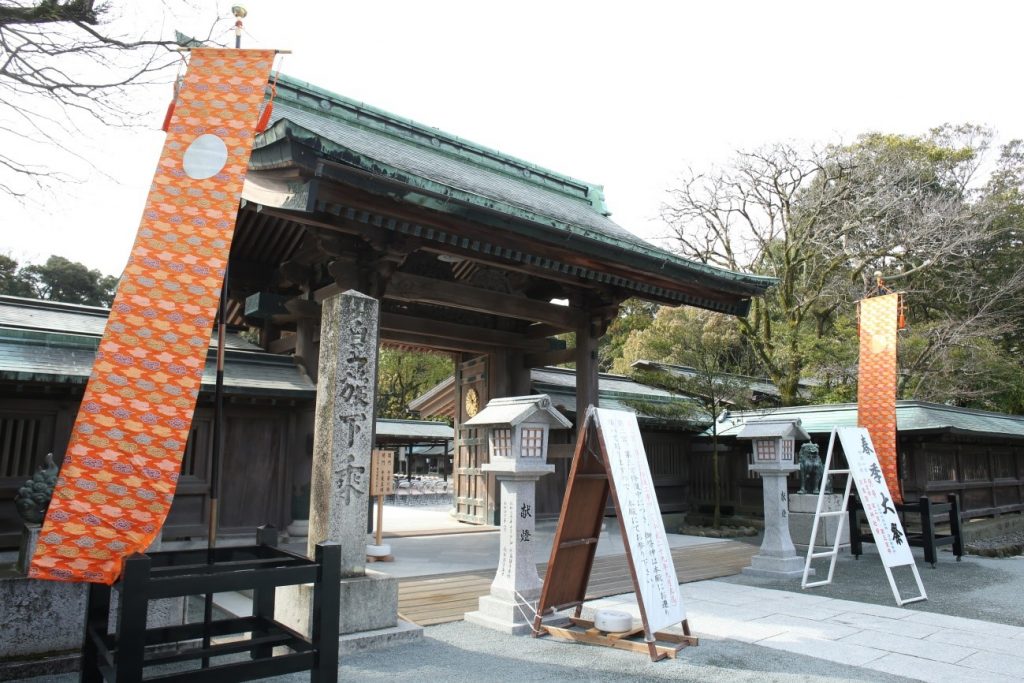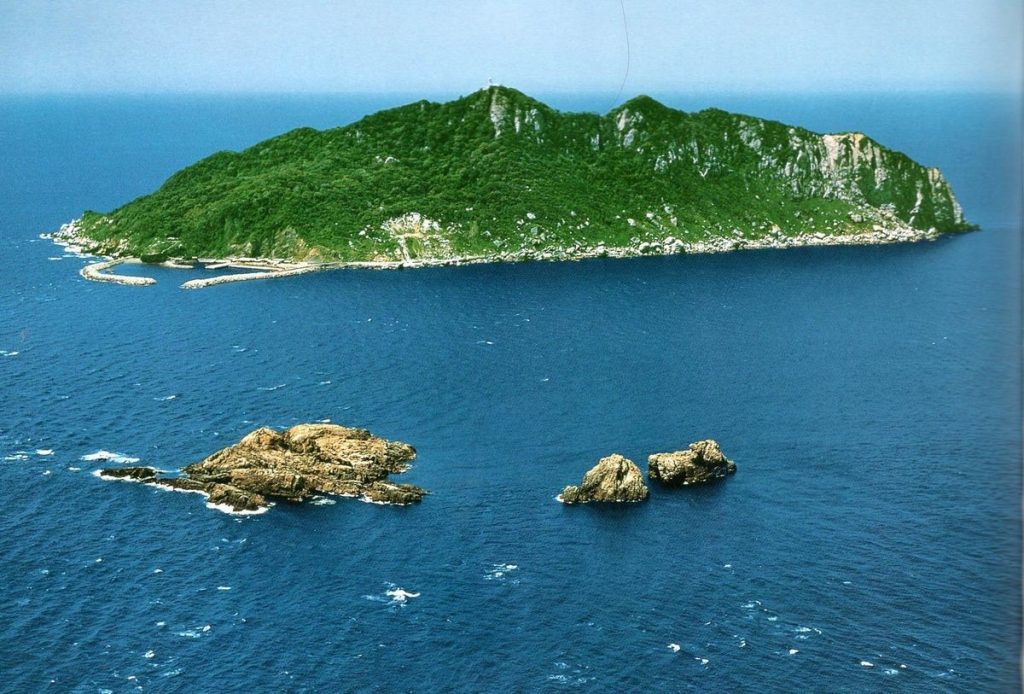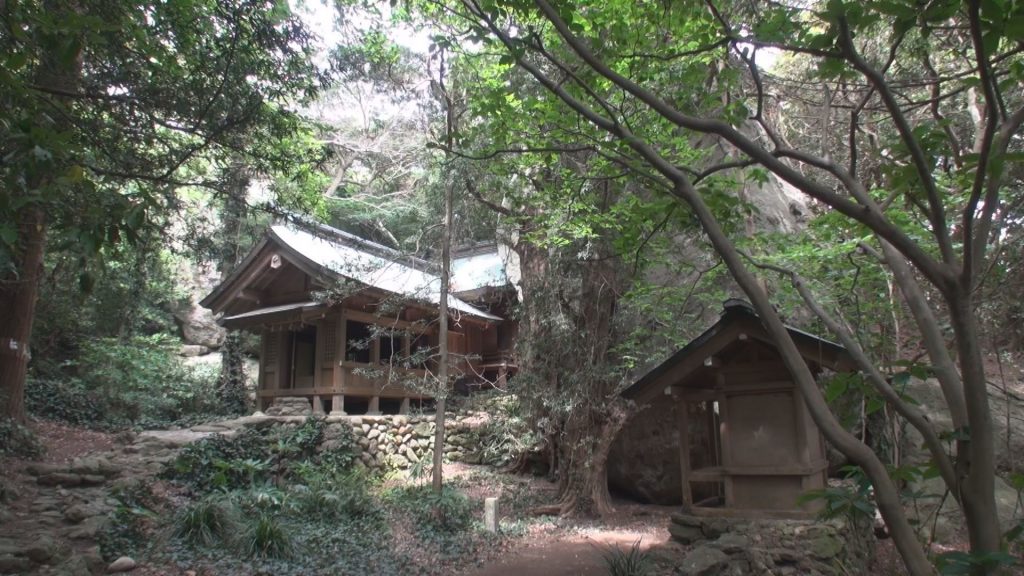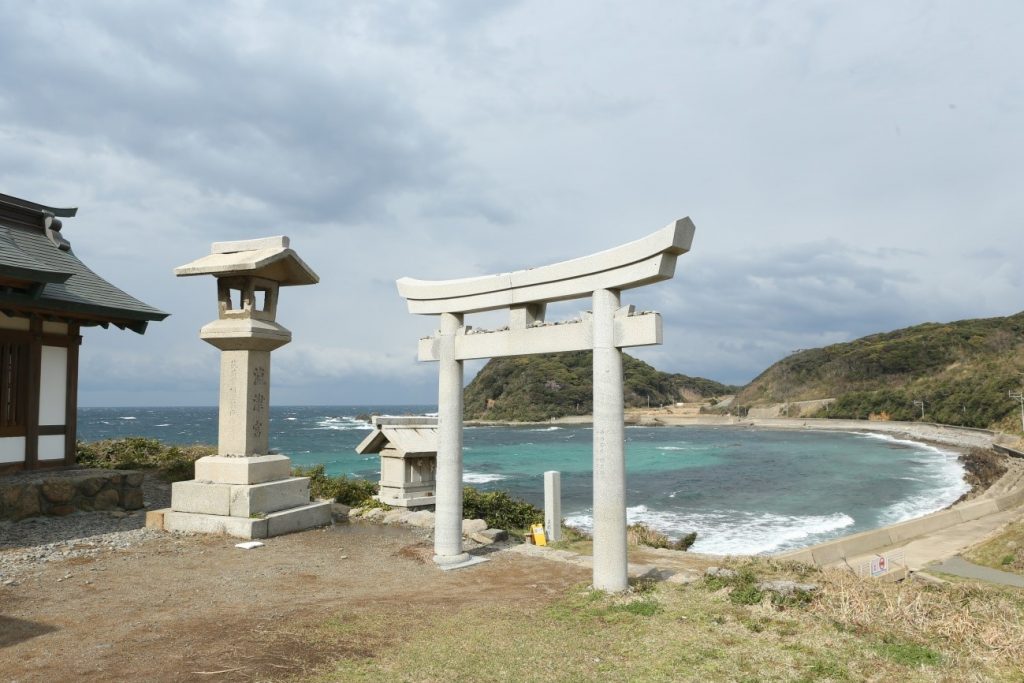Female shrine attendants dance and sing old poems under the moonlight with fires dancing in the background. This fantastical spiritual ritual is the finale of the fall festival of the Munakata Shrine, Takamiya Kannabi-sai.
In July 2017, the Sacred Island of Okinoshima and the Associated Sites in the Munakata Region was designated a UNESCO World Heritage Site. Registered in this process were the following eight locations related to the Munakata Taisha Shrine Nakatsumiya in the City of Munakata in Fukuoka Prefecture: Okinoshima, Koyajima, Mikadobashira, Tengu-iwa, Munakata Taisha Okitsu-Miya Remote Worship Alter, Munakata Taisha Okitsu-Miya, Munakata Taisha Hetsu-Miya, and Shinbaru-Nuyama Ruins.
Historical artifacts dating back to the 4th century proving an association with ancient East Asia, approximately 80,000 items have been found on these sites showing a rich and serious worship of the three goddesses of Munakata. The abodes of the local families of priests who resided here, honoring the Munakata Taisha faith of nature worship have also been discovered, showcasing items used for rituals, ceremonies, and festivals.

The Munakata Taisha Fall Festival is held over three days once a year.
The only time this ancient festival, The Munakata Taisha Fall Festival honoring the Munakata Taisha faith can be seen is over the three days from October 1st through the 3rd.
The shrines known as Munakata Taisha are located in holy three sites in the Genkai Sea over approximately 60km: Okitsu-Miya in Okinoshima, Nakatsu-Miya in Ohshima, and Hetsu-Miya on Kyushu’s mainland. In each shrine resides a goddess, one of the three goddesses of Munakata who gave birth to Amaterasu (the goddess who birthed Japan). They are the protectors of the routes to these shrines.
The fall festival begins with the Miare Festival whereby the youngest of the three goddesses, Ichikishima-no-kami welcomes to Hetsu-Miya her two elder sisters: the oldest, Tagorihime-no-kami who resides in the Okinoshima Okitsu-Miya, and the middle sister, Tagitsuhime-no-kami who resides in the Ohshima Nakatsu-Miya.
Several hundred elegantly decorated boats carrying parts of the souls of the gods leave from Ohshima heading towards the shrine. This spectacular view, the colors of the flags and the sincerity and intensity, the love of the silent fishermen is a sight to behold. They make a stop at each of the three goddess’ islands and return back.
The souls of the gods are taken into Hetsu-Miya and what follows is the most elegant, traditional style of dances and an equestrian archery ceremony.
In early evening of the 3rd of October, the conclusion of the festival is none other than the Takamiya Kannabi-sai. This is the event whereby the souls of the gods are returned. The site is in the back, way back, of the forest of the Taisha. It is up a steep 200-meter hill comprised of 119 steps. It is the most sacred spot where the three goddesses are to have come to earth. This festival was suspended briefly, but had taken place as an ancient rite until 630 years ago. The priests recite prayers, offer songs, and the female shrine attendants dance. This will take you back into a time of classic novels, unlike the reality that surrounds us today, this place and experience in the woods is truly magical.








